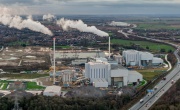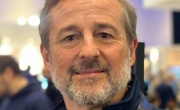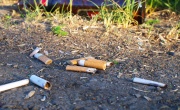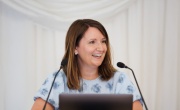Reeling in Rubbish
It turns out that fishermen in Rio de Janeiro now have other fish to fry. Amelia Kelly reports on a project that is stepping up to help combat the state’s poor waste management – and encourage change in regular life.
An estimated 16 million people live around Guanabara Bay, Rio De Janeiro, making it one of the world’s most densely populated urban areas. Its banks are covered by several of the city’s municipalities, which vary in size, wealth and social structure – and in their approaches to waste management and collection.
 With such heavily occupied cities, which in turn house many low-income favelas, it is no wonder that Brazil is the fourth-largest producer of plastic waste in the world, recycling just 1.28 per cent of the 11.4 million tonnes of waste it creates annually. In Rio de Janeiro alone, approximately 3.5 million metric tonnes of waste are generated – only 1.9 per cent of which is recycled.
With such heavily occupied cities, which in turn house many low-income favelas, it is no wonder that Brazil is the fourth-largest producer of plastic waste in the world, recycling just 1.28 per cent of the 11.4 million tonnes of waste it creates annually. In Rio de Janeiro alone, approximately 3.5 million metric tonnes of waste are generated – only 1.9 per cent of which is recycled.
Although in some areas of Rio de Janeiro there is good municipal waste collection, in others – mainly the favelas – there is not. Waste is often discarded into the rivers of different municipalities, eventually reaching Guanabara Bay – in fact, approximately 90 tonnes of waste floats downstream every day to pollute it.
In an effort to lessen the high quantity of solid waste pollution, and make up for the downfalls of insufficient waste infrastructure, various initiatives have developed to alter citizen attitudes towards waste management and collection – and embed those new attitudes into existing ways of being.
Notably, a new process conducted by Italian social enterprise Ogyre sees fishermen recovering solid waste from the Bay in traditional fishing boats and bringing it ashore to be recycled. Alongside Brazilian-based non-profit BVRio, the partnership aims to remove an estimated 100 tonnes of waste from Guanabara Bay over the next 12 months.
BVRio promotes the use of ‘market mechanisms to facilitate compliance with environmental laws and support the green and low carbon economy’. Its ‘Circular Action Hub’, an online platform connecting ‘informal waste management and recycling initiatives’ with commercial sponsors and funding, is where Ogyre initially saw a similar project, which prompted a collaboration. Ogyre’s own focus – to work with fishermen to remove litter from the ocean globally – reflected BVRio’s existing relationship with fishing communities in Rio de Janeiro.
In December 2021, the organisations launched a three-month trial project to collect plastic from Guanabara Bay while providing the fishermen on the island of IIha do Governador with an additional wage.
When concluded a success, Ogyre suggested tweaking the project to collect ‘all kinds of inorganic material in the ocean and mangroves’.
The second phase of the project, which launched in April 2022, has been ‘significantly scaled up’ and aims to collect twice as much plastic per day, with a target of 100 tonnes removed from the sea, rivers and mangroves in one year’s time.
Specifics of the project, as described by Lucy Cox, Director of International Communications at BVRio, are as follows: “Twice a week the 20 fishermen (ten in each colony) divide into pairs and leave at around 7 am, to fish for waste in rowing boats. They have a target amount of waste to be collected per day – 100kg per boat.
“When they have enough, they go back to the colony, and sort the material (plastic, metal, glass, foam, fabric, rubber, electronic waste, etc.), then weigh each type of waste separately. The coordinator in the colony registers these residues in BVRio’s KOLEKT app – including photos of the scale, waste and the fishers who collected it, as well as recording the weight and type of material. Photos must be taken on the day and contain timestamps and GPS coordinates.
“All material that can be recycled is separated, and a local cooperative (in this case, cooperative Cooperecológica) buys it. Waste that has no value for recycling is sent to the landfill by the municipal waste collection company.
“Every Friday, the fishers receive payment for the week. Since the beginning of the project, all fishers have reached their collection targets.”
Created last year, BVRio has received positive feedback on its KOLEKT app, with both fishermen and recycling centres saying that they liked using the technology, which aims to become ‘the first multi-material global waste management app that brings together solid waste producers, collectors and recyclers’.
Commenting on the decision to resume the ‘fishing for litter’ project, Pedro Succar, BVRio’s circular economy specialist, said: “We are very pleased with the continuity of the project, as we understand that initiatives like this one, to clean up Guanabara Bay, can serve as an inspiration to replicate and implement this model in other regions.”
This comment was supported by Andrea Faldella, Ogyre co-founder, who confirmed: “Giving continuity to the project is key for both the local community of fisherman and the Guanabara Bay environment. The partnership with BVRio will be long-lasting and will be extended to other locations, in Brazil and abroad.”
Now successfully underway, the project’s second phase takes into account the environmental and social values that both companies share. For instance, ensuring – as BVRio says – that “70 per cent of the project value is direct remuneration for the fishermen.”
The project provides a valuable insight into how diverse communities may be incentivised to collect waste for recycling – in this case, through financial reward and education.
In exchange for collecting waste, each pair of fishermen are paid R$300 a day, over double the daily minimum wage in Brazil, sustaining both the fishermen’s families and their normal fishing activity – increasingly costly due to fuel.
 This article was taken from Issue 103
This article was taken from Issue 103According to Lucy Cox, most fishermen are actually “now finding that it costs more to run their fishing boats – as they require fuel to reach fishing grounds further offshore – than they are able to make by selling their catch.” Instead of the motorboats they use to fish, rowing boats are used to collect waste, with the litter coming into the coast and the mangroves. Income from fishing can also be ‘extremely variable’ as it is seasonal, depending on good weather.
The project has also had a wider educational impact on the fishermen. Where they once threw plastic that they caught whilst fishing back into the ocean, they now keep it on the boat. As Lucy Cox says, “it’s definitely inspiring them to be a part of something that they didn’t think was a big deal.”
The project has given the fishermen a clear route to get waste to recyclers, where before there was none. Currently, around 20 per cent of the waste collected is suitable for recycling, consisiting of plastics, metal, foam/flip-flops and glass. Other materials – such as rubber, textiles, flexible plastics, electronic waste and even sofas and beds – cannot be recycled due to contamination, and are sent to municipal landfill in Rio.
The variety and volume of materials recovered shows the potential for similar schemes to help combat the world’s waste problem. Going forwards, BVRio has plans for further expansion into Vietnam and Indonesia, with field trials for the KOLEKT app already underway in these countries. For now, it is evident that grassroots schemes can have significant impact and, when forged correctly, support broken waste infrastructure.




